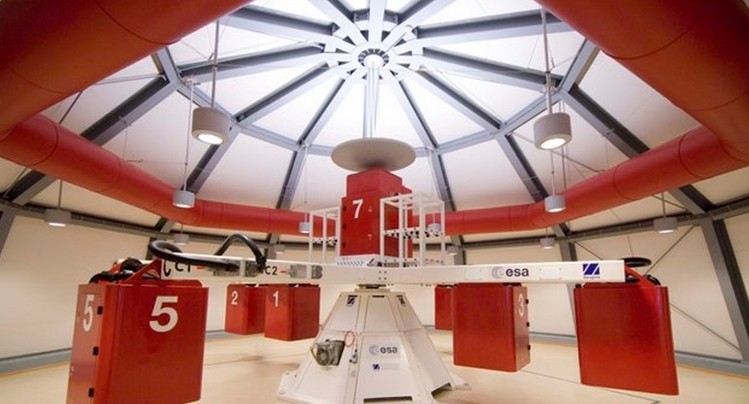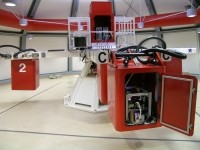Centrifugal 'flash-frying' - the future of the food industry?
Fish & Chips anyone? ESA cooks fries in 'space'

The purpose of the exercise is to improve space food for astronauts.
Dr John Lioumbas, post doctoral fellow, Aristotle University, told FoodProductionDaily it was a challenge to design an apparatus which is capable of frying potatoes inside a Large Diameter Centrifuge, while spinning to produce hypergravity conditions up to nine times greater than Earth.
Crispier fries in a shorter time
“The challenges which I, and Professor Thodoris Karapantsios, had to face during the design of this experiment, which is one of a kind, made it a really fascinating experience,” he said.
“In particular, it was really fun for me to stay at the ESAs premises (ESTEC, Noordwij, The Netherlands) for one month and conduct experiments frying potatoes for astronauts.
“The research results indicate if someone wants crispier fries in a shorter time, then cooking in a bit of extra gravity helps, but there’s nothing to be gained, and there are some disadvantages, from centrifuging to a force greater than 3g.
'Flash-frying'
“This could be worth knowing for the food industry, where centrifugal “flash-frying” might be worth a try.”
As part of the experiment, the scientists chopped potatoes into thin sticks and deep fried them in extra-virgin olive oil, one side at a time, in a spinning centrifuge that created conditions of up to nine times Earth’s gravity.
They found that higher gravity levels increased the heat transfer between the hot oil and the potato, shortening frying time turning them into thick, crispy crusts.
The crust reached its maximum thickness when the potato was fried at three times Earth’s gravity; any further increase in gravity levels did not improve the fry’s crispiness.
Soggy-bottomed
Unfortunately, the bottoms of the fries were insulated from the oil by a layer of water vapor coming out of the potato’s pores, making a soggy-bottomed fry no matter what the gravity level was.
“In the future, for long-duration space missions, food must meet the acceptability/preference requirements of crew members,” added Lioumbas.
“Therefore, food preparation processes existing on earth will soon have to be adapted and/or redesigned so as to be performed under reduced gravity and weightlessness.
“Although food heating may be an easy task other processes are for the moment unimaginable in these environments.
“To the best of our knowledge, little has been done to address the issue of food processing and preparation in weightlessness.
Future space colonizers
“Moreover, we thought it would be great for future space colonizers to be able to eat something that tastes great such as French Fries!”
The research demonstrated to cook French fries faster and make them crispy, 3g is the preferred amount of gravity needed to make that happen. Anything over that results in a mushy mess.
Using these findings, the research team hopes to work with less gravity (at least less than what’s found on Earth) and see how that affects cooking.














